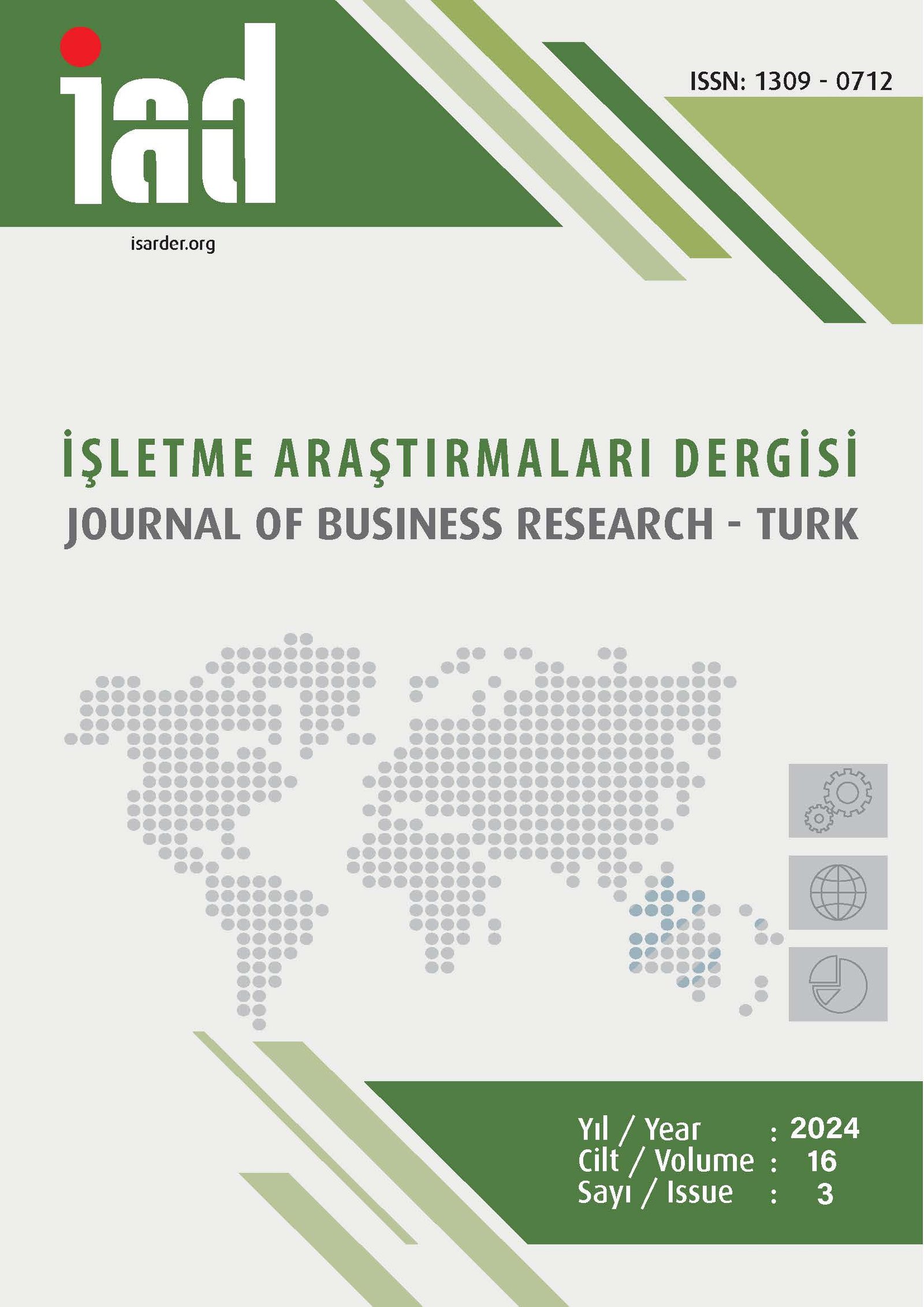Kadın Sağlık Çalışanlarının Motivasyonlarının Risk Alma Eğilimine Etkisi
DOI:
https://doi.org/10.20491/isarder.2024.1869Anahtar Kelimeler:
Risk Alma Eğilimi- Çalışan MotivasyonuÖzet
Amaç – Bu çalışmanın temel amacı, kadın sağlık çalışanlarının motivasyonlarının risk alma eğilimine etkisini incelemektir. Yöntem: Bu amaca ulaşmak için nicel araştırmanın en uygun yöntem olduğu düşünülmüştür. Çalışmanın evrenini kadın sağlık çalışanları oluşturmaktadır. Kolayda örneklem yöntemi ile 381 kişiden çevrimiçi anketler kullanılarak veri toplanmıştır. Elde edilen verilerle, faktör analizi, frekans analizi, korelasyon ve regresyon analizleri yapılmıştır. Faktör analizi sonuçlarına göre çalışan motivasyonu değişkeninde dört boyut (örgütsel, sosyal, içsel, fiziksel altyapıya dönük motivasyon), risk alma değişkeni ise tek boyutla ifade edilmiştir. Bulgular – Korelasyon analizi sonuçlarına göre kadınların çalışma motivasyonu ile risk alma eğilimi arasında düşük düzeyde anlamlı ilişki saptanmıştır. Ayrıca regresyon analizi sonuçlarına göre kadın çalışan motivasyonunun alt boyutlarından örgütsel motivasyon ile içsel motivasyonun risk alma eğilimi üzerinde pozitif yönlü anlamlı etkileri olduğu saptanmıştır. Tartışma – Bu sonuca göre, kadın sağlık çalışanlarının motivasyonlarının arttırılması, risk alma eğilimlerinin de artmasını sağlayacaktır. Çalışan motivasyonunu arttırabilecek faktörlerin (eğitim, gelir, çalışma şartları, fiziki faktörler, yönetici ilişkileri vb.) iyileştirilmesi, çalışanların risk alma eğilimini olumlu yönde etkileyeceği için sağlık sektörüne dönük girişimciliği de destekleyecektir. Gelecek çalışmalarda, risk alma eğilimini ve girişimciliği etkileyen bireysel özelliklerin, duygu durumların, sağlık çalışanlarının öğrenim hayatında ve sonrasında aldığı eğitimin incelenmesi, literatüre ve sağlık sektörüne önemli faydalar sağlayabilir.
İndir
Yayınlanmış
Nasıl Atıf Yapılır
Sayı
Bölüm
Lisans

Bu çalışma Creative Commons Attribution-NoDerivatives 4.0 International License ile lisanslanmıştır.





